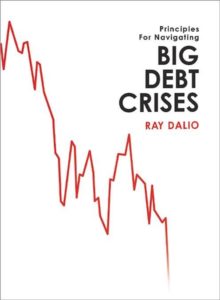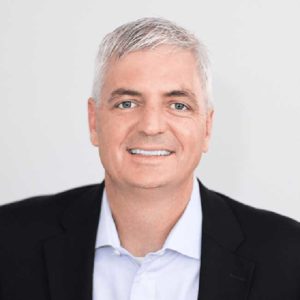
I was recently alerted to Ray Dalio’s new book, Big Debt Crises, while listening to an interview of him done by Barry Ritholtz. Listen to it here. Free PDF of the book here.
Ray founded one of the world’s largest hedge funds, Bridgewater Associates. In recent years, Ray has written several books, outlining the principles he uses when investing. He’s done a ton of research on debt cycles and expounds on them in this latest book. Here’s an excerpt from Part 1:
“…you create a cycle virtually anytime you borrow money. Buying something you can’t afford means spending more than you make. You’re not just borrowing from your lender, you are borrowing from your future self. Essentially, you are creating a time in the future in which you will need to spend less than you make so you can pay it back. The pattern of borrowing, spending more than you make, and then having to spend less than you make very quickly resembles a cycle. This is as true for a national economy as it is for an individual. Borrowing money sets a mechanical, predictable series of events into motion.”
As Ray explains, the cycle occurs the same way for individuals as it would for businesses and economies.
In a nutshell, here’s my version of a debt cycle in six steps:
- When times are good, and people have extra income, they often buy or invest in something by borrowing money (getting a loan). They plan to use their extra income to make payments on the loan.
- When lots of people do this, the economy booms! Prices go up because there is strong demand for things. Sometimes this economic boom causes people to be too optimistic about the future, and they borrow too much money.
- Inevitably, the economy cools. This happens when too many businesses were created, too many houses were built, etc., and there is no longer the demand for things that there once was. When this happens, business revenue drops, causing employees and business owners make less money.
- Making less money hurts people who still must pay back loans. When people can’t pay back their loans, banks get hurt, and they quit loaning as much money. When banks lend less money, the economy does not grow as fast. During bad economic times, it shrinks!
- This causes a vicious cycle. Borrowers must pay back their loans with lower income, and many of them can’t. Some must make large sacrifices to do so.
- We are all impacted by this cycle, because the economy slows, and it takes a while for the economy to recover. Eventually the economy does recover, and the cycle is repeated.
For two reasons, this is fascinating to me.
- People come to us for advice about how to invest their money. For this reason, I need to be able to give them insight into what is happening as market cycles change. Understanding debt cycles can make it easier for us to be confident that the future will be better.
- People come to us for advice about how plan their life. Should they make a career change? Should they quit their job to start a business? Should they buy the beach condo? People often borrow money during these life changes. Understanding debt cycles can help individuals better understand the risks of borrowing money. It would be much better if people did not borrow more than they can pay back, even during bad economic times.
I have been a financial adviser for twelve years. In my experience, most people don’t have a magic asset value or net worth number that will make them feel secure. Instead, they want to know what the possibilities are for their lives, and how to achieve those possibilities as efficiently as possible, with minimal risk.
For most people (and businesses, countries, etc.), borrowing money can make a lot of sense at times. Ray Dalio’s book can help us better understand debt cycles, and what we can do to avoid pitfalls when borrowing money.
In Ray’s book, he dives into how debt cycles have occurred in the past. He uses his research to formulate what he calls “Beautiful Deleveraging”. Watch a short video on it here. We’ll talk about this in a future post.
In the meantime, remember that any money you borrow this holiday season will have to be paid back by your future self. Your future self might not be happy about it.
If Together Planning can help you with financial planning or investment management, please contact us.


